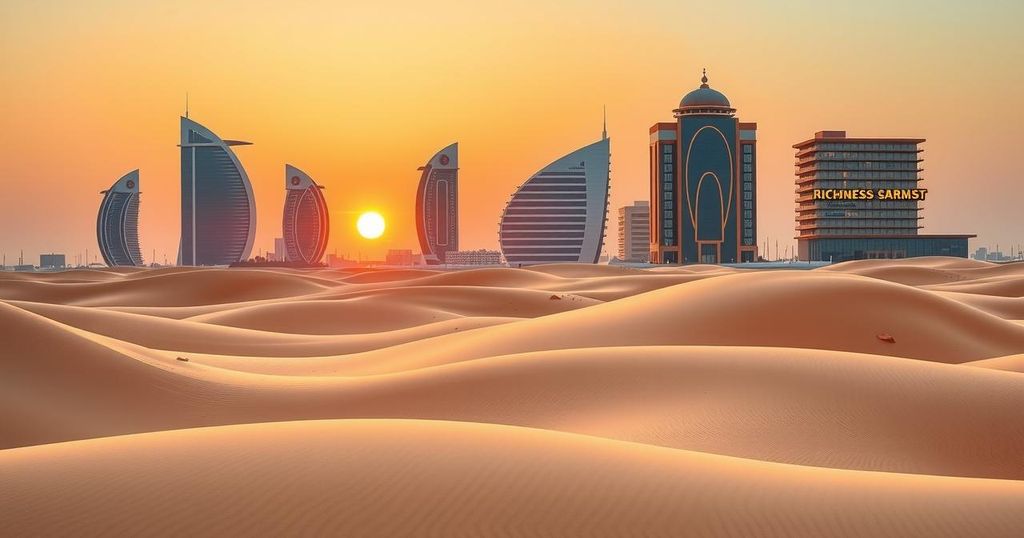Transformations and Challenges in the United Arab Emirates

The United Arab Emirates has transformed dramatically over 40 years, evolving from a resource-scarce nation primarily dependent on camels to a luxurious state with modern infrastructure and varied social policies. It operates as a federation of wealthy emirates, promoting gender equality and educational opportunities, while cautiously managing complex regional security dynamics. Amid geopolitical tensions, the UAE seeks to assert its diplomatic influence and foster stability both within and beyond its borders.
The transformation of the United Arab Emirates (UAE) over the past four decades is remarkable. Initially characterized by minimal infrastructure, including scarce electricity and reliance on camels for transport, the UAE has evolved into a hub of luxury, featuring modern superhighways, opulent malls with indoor ski slopes, and luxury cars like Bentleys and Rolls Royces on the streets. This dramatic shift highlights the allure of the UAE, marked by high-end amenities and international tourism.
Located along the Persian Gulf, the UAE is a federation of seven emirates, each ruled by its royal family. Abu Dhabi, the capital, is exceptionally wealthy due to its vast oil reserves, accounting for 90 percent of the nation’s oil supply. The emirates share this wealth, particularly with those having less natural resources, which leads to a unique socio-economic dynamic within the federation, reminiscent of Washington D.C. and New York City.
A constitutional structure governs the UAE with the Federal Supreme Council comprising the rulers of the seven emirates, developed post-independence in 1971. The president is the ruler of Abu Dhabi, and the vice president is the ruler of Dubai. This governance, characterized by absolute monarchy, has been evolving gradually toward a more participatory approach, with recent developments allowing citizen involvement in advisory capacities through the Federal National Council.
Women’s roles in the UAE have expanded significantly, exemplified by Najla Al Awadhi, a prominent female executive in Dubai television. She emphasized the importance of understanding the diverse realities of Muslim women, countering stereotypes of suppression. The UAE’s educational system boasts high university attendance rates and has successfully integrated women into higher education, reflecting the shifting cultural landscape towards inclusion and empowerment.
Despite enjoying benefits such as free healthcare, education, and housing, the UAE grapples with the geopolitical turbulence of the region. The government is concerned with Iranian nuclear capabilities while fostering diplomatic relations. A commitment exists for a gradual U.S. withdrawal from Iraq, as officials fear instability could worsen regional volatility and terrorism threats. The perspective is that peace requires more localized agency in significant diplomatic negotiations, notably with Iran.
The UAE’s leadership calls for greater regional involvement in addressing collective security concerns and advocates for dialogue over military solutions. The threat of conflict is ever-present, yet the UAE remains committed to fostering stable relations and promoting regional cooperation to avert further unrest. Recognizing the need for a careful balance, officials stress the necessity of fostering economic ties while addressing national security threats.
In summary, the United Arab Emirates represents a remarkable case of transformation from a modest desert nation to a prosperous modern state. The governance structure is evolving, with an increasing focus on citizen participation and gender equality, in response to its young and dynamic population. Amidst regional tensions, the UAE is striving to assert its role in diplomacy, seeking to navigate complex geopolitical landscapes while solidifying its national identity and economic future.
Original Source: www.newjerseyhills.com





